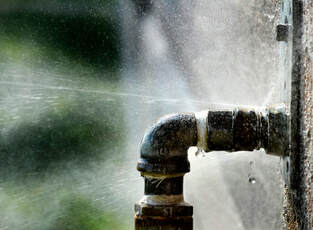Just how to Examine If Your Residence Has a Surprise Leakage
Just how to Examine If Your Residence Has a Surprise Leakage
Blog Article
What're your thoughts on Finding hidden leaks?

Early detection of leaking water lines can alleviate a potential catastrophe. Some little water leakages may not be noticeable.
1. Analyze the Water Meter
Every home has a water meter. Examining it is a guaranteed way that aids you find leakages. For starters, turn off all the water resources. Guarantee nobody will flush, use the tap, shower, run the washing machine or dish washer. From there, go to the meter as well as watch if it will certainly transform. Considering that no one is using it, there ought to be no motions. If it relocates, that indicates a fast-moving leak. Similarly, if you detect no changes, wait a hr or two and also examine back again. This implies you may have a slow-moving leakage that might also be below ground.
2. Examine Water Consumption
Examine your water costs and track your water consumption. As the one paying it, you must observe if there are any type of discrepancies. If you spot sudden changes, in spite of your usage being the same, it indicates that you have leakages in your plumbing system. Bear in mind, your water bill should fall under the very same range monthly. An abrupt spike in your costs shows a fast-moving leakage.
On the other hand, a constant rise each month, despite having the same routines, shows you have a slow-moving leak that's additionally gradually escalating. Call a plumber to thoroughly check your home, particularly if you really feel a cozy area on your flooring with piping below.
3. Do a Food Coloring Test
When it comes to water intake, 30% comes from toilets. If the shade somehow infiltrates your dish throughout that time without flushing, there's a leak between the storage tank as well as dish.
4. Asses Outside Lines
Do not forget to check your exterior water lines too. Test spigots by attaching a garden hose. Needs to water seep out of the connection, you have a loose rubber gasket. Change this and make certain all links are tight. It will assist get it skillfully examined and also preserved each year if you have actually got a lawn sprinkler system. One little leakage can squander lots of water and also spike your water bill.
5. Assess the situation and evaluate
Property owners ought to make it a behavior to examine under the sink counters and also also inside cupboards for any type of bad odor or mold and mildew growth. These two red flags indicate a leakage so punctual focus is called for. Doing regular assessments, also bi-annually, can save you from a major issue.
Examine for discolorations and also weakening as the majority of devices and pipes have a life expectancy. If you think dripping water lines in your plumbing system, do not wait for it to intensify.
Early discovery of dripping water lines can reduce a possible disaster. Some tiny water leaks might not be noticeable. Checking it is a guaranteed way that aids you uncover leakages. One little leakage can squander heaps of water as well as surge your water expense.
If you suspect leaking water lines in your plumbing system, don't wait for it to escalate.
How to Know If Your Home Has a Hidden Leak
Water Meter Reveals Inexplicable Water Usage
If you’d like to test whether or not there’s a leak somewhere in your home, you can do this using your water meter. Here is how to conduct the test:
Don’t use any water in your home for at least 30 minutes; this also means not turning on faucets or water-using appliances.
Go outside, and check your water meter for activity.
If your water meter shows that there was activity, even though no one was using any water, this proves that there is a leak in your home.Visible Mold or Mildew Growth
Leaks behind walls create moist, dark environments that allow mold and mildew to grow and thrive. Eventually, you might see mold growth forming on the wall closest to a hidden leak.
If mold is growing in an area that receives a high amount of moisture, such as a bathroom, it may simply be an indication that better ventilation is needed. However, if you see mold growth on a wall or the ceiling in an area where you would not expect, you probably have a hidden leak.
Musty, Mildew Odor
Sometimes you might not be able to see the mold or mildew that is growing as a result of a leak. However, the smell can give the problem away just as easily. If you catch a whiff of something musty, there’s a good chance that old water is collecting somewhere in your home that you can’t see.
Stained/Warped Walls, Ceilings, or Floors
When your home soaks up water, a variety of red flags can become visible, including ceiling stains, bubbling drywall, warped walls, and sagging floors. While these issues can be caused by excess humidity, they can also be signs that a pipe or plumbing connection has started leaking behind your walls.
Inexplicably High Water Bill
After a while, you get a general sense for what your water bill should be. If you own a pool or sprinkler system, your bill will tend to be higher during summer. However, if you receive a water bill that seems especially high, and you can’t figure out what caused it, then you may have a hidden leak somewhere that’s increasing your bill.
https://www.plumbingjoint.com/blog/2019/july/how-to-know-if-your-home-has-a-hidden-leak/

Do you really like reading up on Locating water leaks? Try to leave a remark directly below. We will be interested to hear your opinions about this blog entry. We are looking forward that you come back again before long. Those who appreciated our article kindly make sure you remember to pass it around. Many thanks for taking the time to read it.
Report this page